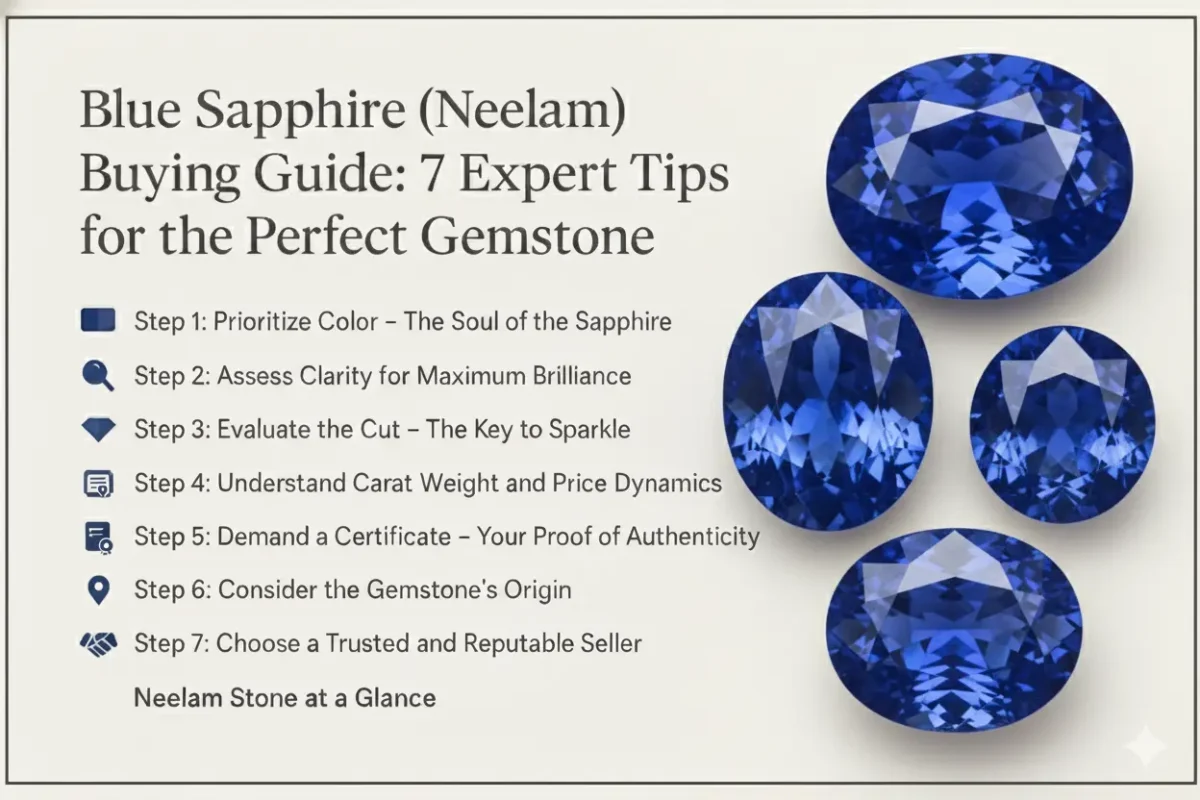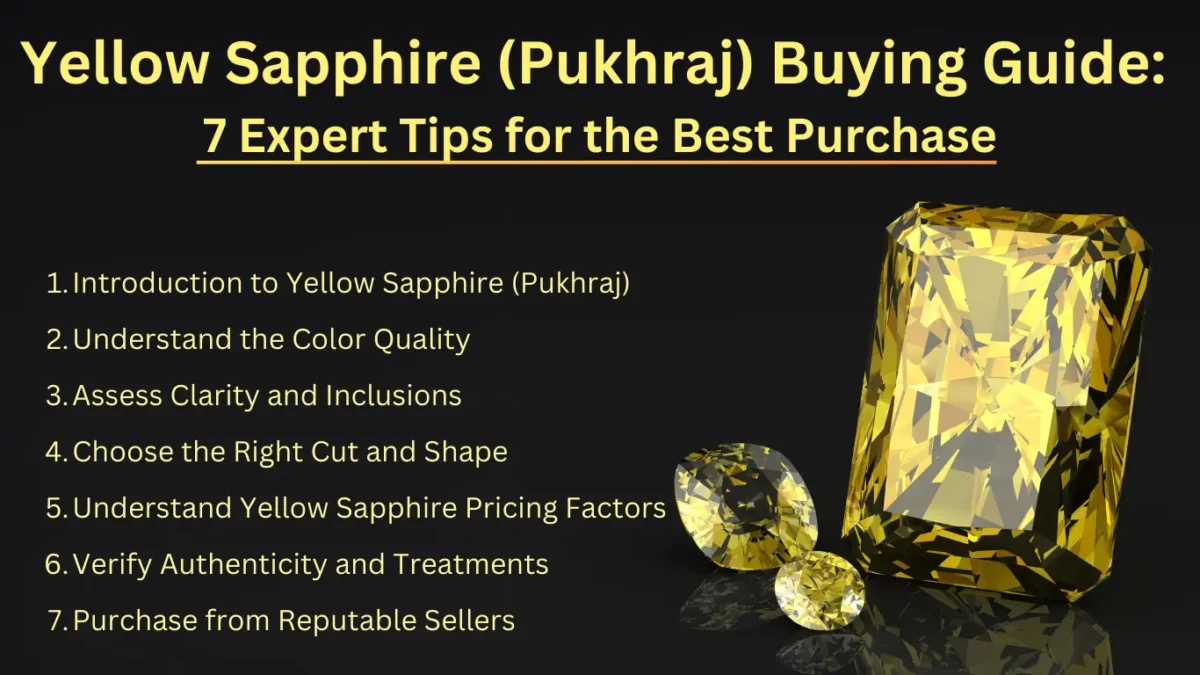Pearl (Moti) Buying Guide: 7 Expert Tips for the Perfect Gemstone
Pearl, known in India as the serene Moti, is a timeless organic gemstone, a treasure from the water that symbolizes purity, wisdom, and emotional balance. Unlike any other gem, its beauty is born, not cut. As the primary gemstone for the Moon (Chandra) in Vedic astrology, Moti is worn to calm the mind and bring tranquility. This expert guide provides in-depth knowledge on the world’s most famous pearl varieties and the 7 value factors, helping you buy an authentic Pearl with complete confidence.

Pearl (Moti) at a Glance
| Gemstone Type | Organic (Nacreous) |
| Indian Name | Moti |
| Ruling Planet | Moon (Chandra) |
| Metaphysical Properties | Calmness, Emotional Balance, Purity |
| Hardness | 2.5 – 4.5 on the Mohs Scale (Very delicate, requires special care) |
The Astrological Significance of Moti and How to Wear It
In Vedic astrology, the Pearl is a powerful gemstone for harnessing the gentle and calming energies of the Moon (Chandra). Following the correct procedure for wearing it is essential to activate its benefits.
Astrological Rules for Wearing a Pearl (Moti)
| Who Should Wear It? | Recommended for individuals with a weak or afflicted Moon in their birth chart. Especially beneficial for Cancer (Karka), Scorpio (Vrishchika), and Pisces (Meena) ascendants. |
| Which Finger? | The little finger of the right (working) hand. |
| Best Metal? | Silver is the most recommended metal as it corresponds with the lunar energies. |
| When to Wear? | On a Monday morning during the Shukla Paksha (waxing moon phase). |
| Energizing Ritual (Prana Pratishtha) | Before wearing for the first time, the pearl ring should be cleansed by dipping it in Gangajal (holy water) or raw cow’s milk. Then, it should be energized by chanting the Chandra mantra “Om Chandraya Namah” (ॐ चंद्राय नमः) 108 times. |
A Guide to the World’s Most Famous Pearls
Understanding the different types of pearls is the first step to making an informed choice. Each has a unique story, character, and value.
Comparison of Major Pearl Types
| Pearl Type | Origin | Size (Typical) | Color | Key Characteristic |
|---|---|---|---|---|
| Basra (Natural) | Persian Gulf | 3 – 8mm | Creamy White | Extremely Rare, Legendary Status |
| South Sea | Australia, Philippines | 9 – 16mm | White, Silver, Gold | Largest Size, Satiny Luster |
| Akoya | Japan, China | 6 – 9mm | White | Perfectly Round, High Luster |
| Tahitian | French Polynesia | 8 – 14mm | Black, Grey, Green | Naturally Dark Colors |
| Keshi | Byproduct of Culturing | 2 – 10mm | Varies | 100% Nacre, High Luster |
| Freshwater | China (Mainly) | 4 – 12mm | White, Pink, Lavender | Affordable, Diverse Shapes |
The Legend of the Basra Pearl: The Basra Moti is not a cultured pearl; it is a natural pearl from the Persian Gulf. For centuries, these were the most prized pearls in the world. Due to over-harvesting and the disruption of the oyster beds, natural Basra pearls are now exceptionally rare and considered collector’s items. They are often irregular in shape with a unique creamy color and a soft, inner glow. For astrological purposes, they are considered the most powerful, but their rarity and high price make them almost impossible to find today.
How to Buy a Quality Pearl: The 7 Value Factors
Step 1: Evaluate the Luster
Luster is the most important quality factor. It is the intense glow that comes from deep within the pearl, created by light reflecting through its many layers of nacre. A high-quality pearl will have a bright, sharp, and clear luster, where you can see your reflection on its surface.
Step 2: Assess the Surface Quality
As a pearl is a natural gem, it will often have minor imperfections on its surface. The fewer and smaller these blemishes (like spots, bumps, or pits), the more valuable the pearl. A top-quality pearl should have a clean, smooth surface.
Step 3: Consider the Shape
The most classic and valuable pearl shape is perfectly round. Because they are so rare, they command the highest prices. However, other shapes can be beautiful and unique, such as drop, button, and the highly prized irregular shape of Keshi pearls.
Step 4: Understand Nacre Quality
Nacre is the beautiful, iridescent substance that forms the pearl. The thickness of the nacre determines the pearl’s durability and affects its luster. A high-quality pearl will have a thick, solid layer of nacre. Keshi pearls are unique because they are composed entirely of nacre, giving them an exceptionally high luster.
Step 5: Verify Authenticity (Natural vs. Cultured)
It is crucial to know what you are buying:
- Natural Pearls: Formed entirely by nature. Incredibly rare and sold by weight.
- Cultured Pearls: Formed with human assistance. The vast majority of pearls sold today are cultured.
Crucial Information: Imitation pearls made of glass or plastic are common. A real pearl will feel gritty when rubbed gently against a tooth, while a fake one will feel smooth.
Step 6: Understand Pricing Factors
The pearl price varies dramatically by type. South Sea pearls are the most expensive cultured pearls due to their large size and rarity. Akoya and Tahitian pearls are in the mid-to-high range, while Freshwater pearls are the most affordable. The legendary Basra pearl is in a category of its own, priced as a rare collector’s gem.
Step 7: Purchase from a Reputable Seller
Always buy from a trusted jeweler who specializes in pearls. A reputable seller will provide a certificate from a gemological lab, which will identify the pearl as natural or cultured and detail its characteristics, type, and origin.
Why Trust Ratna Gems™ for Your Pearl?
At Ratna Gems™, we are committed to providing authentic, high-quality astrological gemstones with complete transparency. We are your trusted source because we offer:
- Certified Authentic Pearls: Every Moti is certified by a recognized lab, detailing its origin and quality.
- Transparent and Honest Pricing: We offer competitive prices for genuine Pearls with full disclosure on quality and type.
- Unmatched Customer Support: Our experts are here to guide you, and our 7-day return policy ensures your complete satisfaction.
Frequently Asked Questions
What is the difference between a Basra and a South Sea pearl?
A Basra pearl is a natural pearl from the Persian Gulf, making it extremely rare and valuable. A South Sea pearl is a cultured pearl, grown with human intervention in the Pinctada maxima oyster. While South Sea pearls are the most valuable cultured pearls, natural Basra pearls are in a different league of rarity and price.
Is a Keshi pearl a natural pearl?
A Keshi pearl is a fascinating byproduct of the culturing process. It is not technically a natural pearl because it forms in a cultured mollusk, but it is 100% nacre, similar to a natural pearl, as it does not contain a bead nucleus. They are prized for their unique shapes and high luster.
Which type of pearl is best for astrology?
For astrological purposes, a natural pearl like a Basra is considered the most powerful, but they are exceptionally rare. A high-quality, untreated cultured pearl, such as a South Sea pearl, is an excellent and widely accepted alternative.
How should I care for my Pearl jewelry?
Clean your pearls with a soft, damp cloth after each wear to remove oils and sweat. Never use ultrasonic cleaners or harsh chemicals. Store them separately in a soft pouch to prevent them from being scratched by other jewelry.






Leave a Comment
You must be logged in to post a comment.